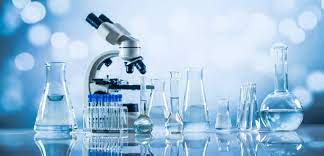Introduction
Laboratory equipment plays a pivotal role in the scientific and research community, enabling researchers to conduct experiments, analyze data, and make groundbreaking discoveries. Whether you are managing a research facility, academic institution, or a private laboratory, having a well-defined purchasing policy for laboratory equipment is essential. A clear and robust policy ensures that you acquire high-quality equipment, manage budgets efficiently, and maintain compliance with regulations. In this blog, we will outline the key components of an effective purchasing policy for laboratory equipment.
1. Needs Assessment
Before making any purchases, it is crucial to conduct a thorough needs assessment. Engage with researchers and scientists to understand their specific equipment requirements. Identify the purpose, frequency of use, and expected lifespan of the equipment. This step ensures that you invest in equipment that directly contributes to your laboratory's goals and minimizes unnecessary expenditures.
2. Budget Allocation
Determine a clear budget allocation for laboratory equipment. This allocation should consider not only the initial purchase cost but also ongoing expenses such as maintenance, calibration, and operational costs. Establish a budget approval process that involves relevant stakeholders to ensure transparency and accountability.
3. Vendor Selection
Choosing the right vendors is essential to ensure the quality and reliability of laboratory equipment. Seek out reputable suppliers who have a track record of delivering high-quality products and excellent customer service. Consider factors such as warranty, after-sales support, and the availability of spare parts when evaluating potential vendors.
4. Equipment Specifications
Define detailed equipment specifications to guide the procurement process. This should include technical specifications, safety requirements, and any regulatory compliance standards that apply to your laboratory's work. Clearly communicate these specifications to vendors to ensure that the equipment meets your expectations.
5. Procurement Process
Establish a well-defined procurement process that outlines the steps from requisition to purchase. This process should include roles and responsibilities, approval workflows, and timelines. Implementing a centralized procurement system can help streamline the process and prevent unauthorized purchases.
6. Quality Assurance
Prioritize quality assurance by conducting thorough inspections and tests of equipment upon delivery. Ensure that the equipment meets the specified standards and is free from defects. Develop procedures for documenting equipment inspections and addressing any discrepancies.
7. Maintenance and Calibration
Include provisions for regular maintenance and calibration in your policy. Clearly define the frequency of maintenance, responsible parties, and the documentation required for compliance. Regular maintenance not only extends the lifespan of equipment but also ensures the accuracy of research results.
8. Training and User Guidelines
Provide training for laboratory personnel on the proper use and maintenance of equipment. Create user guidelines and safety protocols to minimize the risk of accidents and damage to equipment. Training and guidelines should be an integral part of your purchasing policy to promote responsible use.
9. Inventory Management
Implement an inventory management system to keep track of all laboratory equipment. This system should include asset tagging, record keeping, and periodic audits to account for equipment status and location.
10. Disposal and Replacement
Define procedures for the disposal of outdated or non-functional equipment. Consider environmentally responsible disposal methods and budget allocation for replacements. A clear process for equipment retirement ensures the efficient use of resources.
Conclusion
A well-crafted purchasing policy for laboratory equipment in iraq is a cornerstone of efficient laboratory management. It helps align equipment acquisitions with research needs, budget constraints, and regulatory requirements. By following these guidelines, you can ensure that your laboratory maintains a state-of-the-art equipment inventory that supports cutting-edge research and scientific advancements.
Reference Link(OriginallyPosted: https://ziebaqtechnology.livepositively.com/crafting-an-effective-purchasing-policy-for-laboratory-equipment/


No comments yet